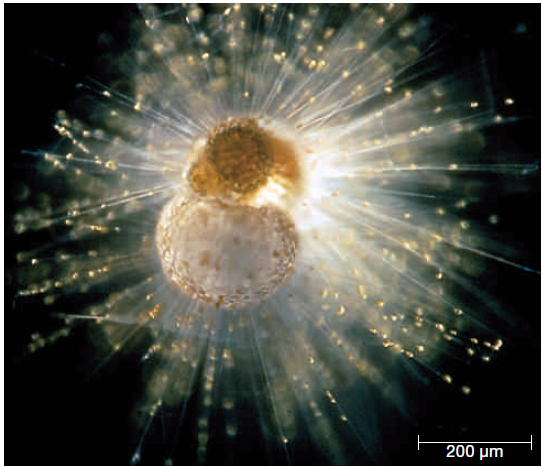
Figure 21.19
The organism in the accompanying figure belongs to which group?
A. Excavates
B. Alveolates
C. Stramenopiles
D. Green algae
E. Rhizarians
Answer: E
You might also like to view...
Energy from glucose can be extracted and converted to ATP only if:
What will be an ideal response?
Amanda was studying turtles based on DNA analysis. Under the current classification scheme, which of the following turtle species are thought to be most closely related? (1) Graptemys ouachitensis, (2) Trachemys scripta, (3) Apalone spinifera, (4) Graptemys kohni.
A. 1 and 3 due to inductive reasoning B. 1 and 3 due to deductive reasoning C. 2 and 3 due to inductive reasoning D. 1 and 4 due to inductive reasoning E. 2 and 3 due to deductive reasoning F. 1 and 4 due to deductive reasoning Clarify Question 1. What is the key concept addressed by the question? 2. What type of thinking is required? 3. What key words does the question contain and what do they mean? Gather Content 1. What do you know about relatedness based on species names?How does it relate to the question? Consider Possibilities 1. What other information is related to the question? Which information is most useful? 2. In which examples are general principles being used and in which are specific results being considered? Choose Answer 1. Given what you now know, what information and/or problem solving approach is most likely to produce the correct answer? Reflect on Process 1. Did your problem-solving process lead you to the correct answer? If not, where did the process break down or lead you astray? How can you revise your approach to produce a more desirable result?
Which type of speciation occurs when there is a shift in the chromosomal number?
a. Allopatric b. Gene flow c. Stabilizing selection d. Sexual selection e. Sympatric
A diploid individual has a maximum of ____ different alleles for a particular locus
a. one b. two c. three d. four e. more than four